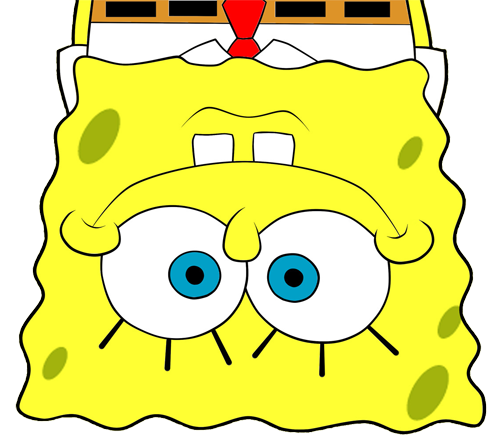Introduction
One of the first examples of habit tracking is the popular Seinfeld Strategy. Jerry Seinfeld, the famous comedian, used a big wall calendar to pressure himself to write by putting a big red X on every day where he wrote jokes. "After a few days you’ll have a chain. Just keep at it and the chain will grow longer every day. You’ll like seeing that chain, especially when you get a few weeks under your belt. Your only job next is to not break the chain."
Most important things in life are built over time. For example, a great runner has to run a lot and the same logic applies to any skill like playing an instrument or drawing. Consistency and perseverance are important, the results are not. (A bad workout is preferable to a missed one.)
A habit tracker is a great tool to reward the process, not the outcome. Results are a side-effect of the right process.
I can predict the long-term outcome of your success if you show me your daily habits.
American Author
A Better Strategy 💪
The Seinfeld Strategy is great for your main habit. If you need to track several habits, you can hang on the wall different calendars but you may not want to practice every habit every day. Running three times per week can be a decent goal, especially for young parents where it’s very hard to have the same routine between weekdays and weekend days.
Using Applications 👎
Applications now exist to track any habit, allowing you to set a target number of days per week or month. These applications offer statistics that can be useful to reflect on your progress and understand why some habits are easier or more difficult. They solve for sure the previously cited limitations but they lack the visibility of a big wall calendar and they are not fun enough. Moreover, turning to your phone to track your habits is like asking a robber to watch for your belongings. We can do better.
Using LEGO 👍
LEGO’s bricks are fun. They are physical elements that are enjoyable to manipulate compared to sending electrical charges on a touchscreen.
I came across the idea of using LEGO to track my habit after viewing the LEGO World Map set:
As always, my idea was not really new. There are so many LEGO fans in the world. For example, you can assemble a minifig for each habit and stack plates or bricks to represent progress (one habit completed = one plate/tile/stud/brick).
It works but the recent LEGO Art collection is more convenient (and powerful) to use as a habit tracker foundation.
Using LEGO Art 🚀
LEGO Art sets were introduced in 2020 to create iconic characters or artwork in a mosaic-like format using LEGO 1x1 studs. The LEGO World Map with its 11695 pieces is still the largest LEGO set at the time of writing and is the one I decided to use for my LEGO habit tracker.
The idea is to pin a tile for every completed habit. The final results will look like this:
My goal was to track a few key habits on which I want to commit for the upcoming decade:
-
Study flashcards (frequency: every day): Review flashcards on my smartphone for ~15 minutes.
-
Exercise (frequency: every two days): Exercise (ex: running, swimming, elliptical bike, …) for at least 30 minutes.
-
Read books (frequency: a book per week): Complete a fiction/nonfiction book.
-
Write blog posts (frequency: every two days): Write articles (but also code on side projects) for at least 1h.
-
Meditate (frequency: every weekday at least): Practice using a timer or guided meditations during 5-10 minutes.
-
Draw (frequency: every three days at least): Draw illustrations using pencils or digital tools like Illustrator/Photoshop.
The LEGO studs and tiles in the set are divided into ten different colors. Here are the associations between colors and my habits:
As you may have noticed, I assigned the dark blue and orange colors to two additional groups:
-
Milestones: The motivation is to represent completed tasks. Milestones are a call for action, a motivation to complete tasks (instead of leaving tasks unfinished for too long). The only requirement is for the results to be visible or concrete. For example, I used one of these tiles after publishing a new article on my blog, a new feature on a side project, or after building my LEGO Box (see F.A.Q. ❓).
-
Buffer: When tracking several habits, we cannot expect everything to run smoothly. Some habits will become more automatic (in which case the total number of tiles could be reached before other habits). Reserving one or two colors to continue these habits after depleting their stock could be useful to continue tracking and rewarding them.
Here is a representation of the map where the meaning is made visible:
A Few Principles 💡
I reflected during several months before tracking my habits using the LEGO map (as I wanted to start on New Year’s Day). I iterated on the implementation several times. Here are the recommendations that guide me in the end:
-
One day. One tile. Never pin more than a single tile per day for a single habit. For example, if you split your flashcard study session because you were interrupted, only add a single tile and only if you’ve completed your daily goal.
-
Process > Result. Except for milestones, the focus is always on the process. For example, writing for 1h or writing 500 words is more interesting than publishing an article. Quality is more important than quantity. Writing creative articles requires time. Trust the process.
-
Limit the number of habits. Depending on the size of your LEGO habit tracker, be sure to track habits you really (really) still plan to do in a few years. For example, I’m currently working on my English pronunciation but it’s only a temporary habit where the benefits are more immediate. I decided not to track habits like these.
-
Stay flexible. I see the map as a guide, not a well-defined plan to execute. For example, I group writing articles and code (on side projects) under the same color. If I end up writing more code on GitHub than articles on my blog, it’s not necessarily a bad thing. The reverse is also true. The goal is to move in the right direction, not to plan the destination.
-
Two-step process. Pick a tile after a habit but don’t pin it immediately. For example, when building a complex set like the LEGO World Map, you need the instructions to determine where to pin a tile. I prefer to spend more time building my habits than my LEGO habit tracker. Therefore, I usually end my weekly session where I review my notes by pinning all collected tiles during the last week. This also gives me a precise idea of my progress (= my velocity).
A Lot of Fun 🎉
I don’t have to wait for the completion of my map to observe some of its advantages:
-
Fun. I’m not an Adult fan of LEGO (AFOL) but playing again with LEGO feels so special.
-
Transparence. No need to open an application, no need to wait for a weekly report mail. Place the LEGO habit tracker close to your desk and you will have a constant reminder to act.
-
No Interruption. No risk of being distracted when picking a tile compared to using an application where notifications are always waiting for your attention.
-
Kids Friendly. You may use this technique with your kids to teach them how to form new habits. (⚠️ I also dread the day when I will walk into my office to find that my son will have completed the rest of my map for fun. 😂)
Moreover, I expect the biggest advantages to come from the consistency brought by using the map.
I haven’t really found drawbacks. For sure, you cannot travel with your LEGO habit tracker. But it isn’t a huge problem. You can simply edit a note on your phone during holidays to record your habits, or carry with you two small boxes (1 box with a stock of tiles and 1 box for the completed tiles). That’s the power of using small tiles 1x1 compared to larger LEGO pieces.
Conclusion 📍
Habits are essential. Good habits help us get better but their reward usually comes after many years of practice. A habit tracker creates small but frequent rewards along the way.
I’m glad that I finally started tracking my habits. I have reviewed my flashcards for many years but I wasn’t as regular as during my last year. I think my habit tracker is the main reason behind this change. In a digital world where we struggle to keep our attention on what’s important for us, using a physical habit tracker is the most sensible thing to do.
My habit tracker is like the cement that solidifies the bricks I lay after completing every single habit. It makes progress visible and gives the tempo. When I feel less motivated due to bad weather and a bad night, having the map in front of me showing me how often I’ve run in the past is a strong motivator to lace my shoes.
The beginning of a habit is like an invisible thread, but every time we repeat the act we strengthen the strand, add to it another filament, until it becomes a great cable and binds us irrevocably, in thought and act.
LEGO tiles are my visual representation of this thread. What is yours?
F.A.Q. ❓
Which habits to track?
Tracked habits must be representative of who you want to become. Don’t track habits for the person who should be right now. For example, if you are a parent, I don’t think you must track, for example, time spent with your kids. Playing with my son is my biggest priority. I do it naturally without having to track it. Spending time with family is more a philosophy of life, not a habit. It’s not something that must feel challenging.
Other ideas that I explored but decided not to include in my experiment (not because they aren’t interesting to track!): be nice to someone 😘, connect with Nature 🏝, try something new 🧪, practice a foreign language 🗣️, sleep at least 7h 😴.
Is it worth It?
To be honest, I was not confident at first. But I strongly believe that we must do things differently if we want to have different results. After one year of practice, I’m now more confident than ever that using a habit tracker is a great idea, especially something fun as presented in this article.
The LEGO World Map still represents the set with the biggest number of pieces for the most "decent" price (0.02 per tile = each reward costs you $0.02). It’s a fair price compared to the benefits of your habits.
How large should the LEGO set be?
Using a set that requires a long time to complete is a great idea. The benefits of habits are rarely (never?) obvious after a few days. Your habit tracker must expand a large horizon to reflect this reality. As a bonus, completing my map after a decade will feel for sure more gratifying and more special than completing a smaller project.
Where to store LEGO tiles?
LEGO ships tiles in plastic bags. LEGO builders often use kitchen containers to store them during the assembly. In my case, the map will be filled progressively over a decade. I cannot store bowls of tiles on my desk for so long. The most obvious approach is to buy a plastic sorting box.
I decided instead to design a small box in LEGO to keep a subset of the stock of tiles at hand (see Bonus: My Lego Box).
Where to start on the map?
I pinned (symbolically) the first tile where I live (in France) and build around this location to explore the world. I continued on upper plates, since the map is on my desk and it’s easier to reach the top for now (I will maybe move the map elsewhere or hang it on the wall before reaching the lower plates).
Why track milestones?
The word "productivity" has the same origin as the Latin verb producere, which means "to produce." This means that at the end of the day, if you can’t point to some kind of output or result you’ve produced, it’s questionable whether you’ve been productive at all.
Building a Second brain
The dark blue tiles on my map have the same goal. Productivity must be observable. You need concrete achievements to demonstrate progress.
What about other LEGO Art sets?
The World Map is not the only set. The LEGO Art catalog grows over time and now offers different options:
-
Mickey Mouse: 2658 tiles, 4 main colors.
-
Batman: 4167 tiles, 3 main colors in the Batman configuration. (💡 Different pictures are possible and two sets can be combined to create larger artworks.)
-
The Great Wave: 1810 tiles, 3 main colors on the background (⚠️ Not only 1x1 tiles on the foreground).
-
The Mosaic Maker: 4702 tiles, 5 colors, customizable picture.
What about a custom LEGO Art?
Let’s take this picture for illustration purposes:
-
Open the file in Photoshop
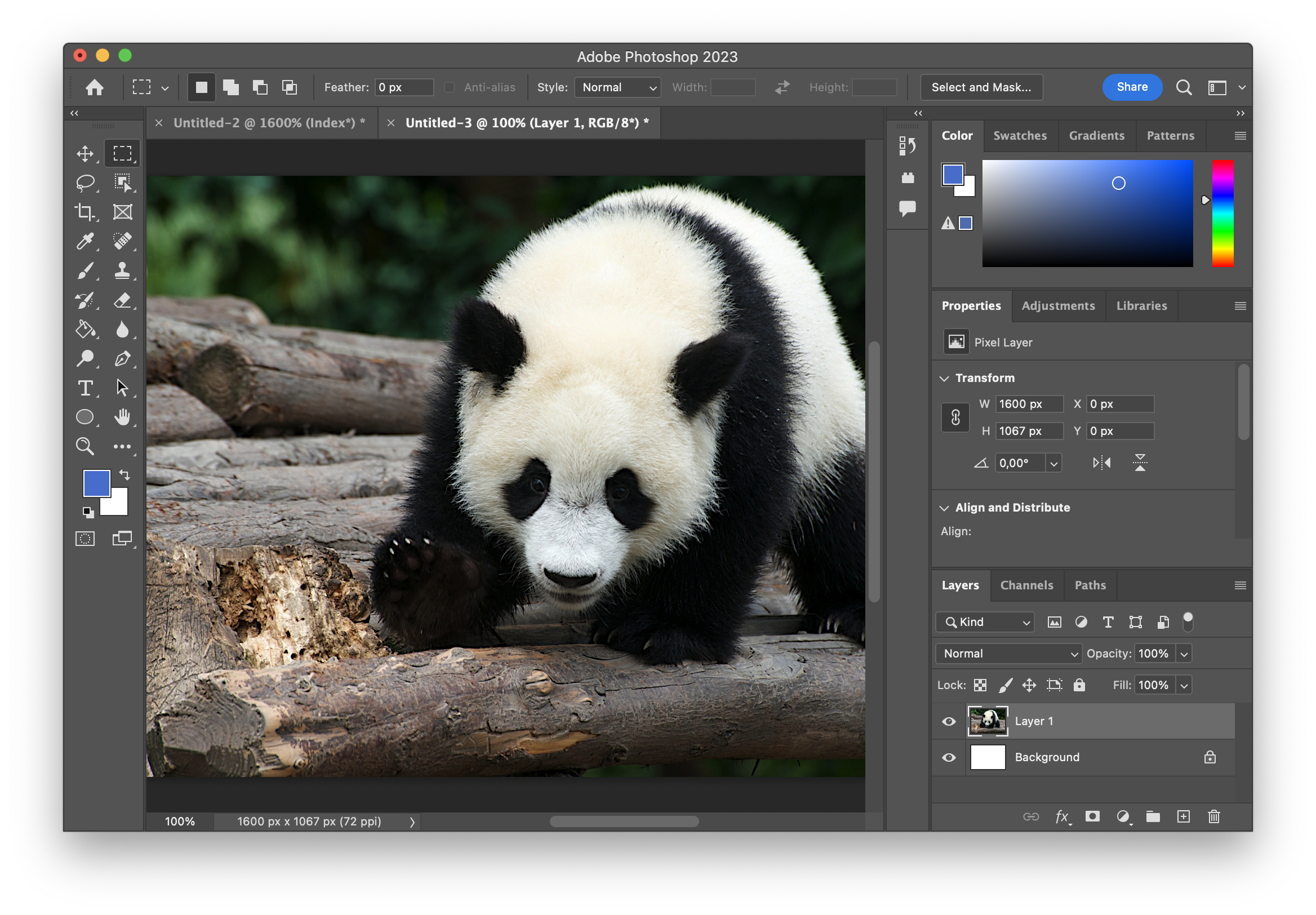
-
Crop
Objective: enforce the width/height ratio.
Here, I crop to create a square-shaped image:
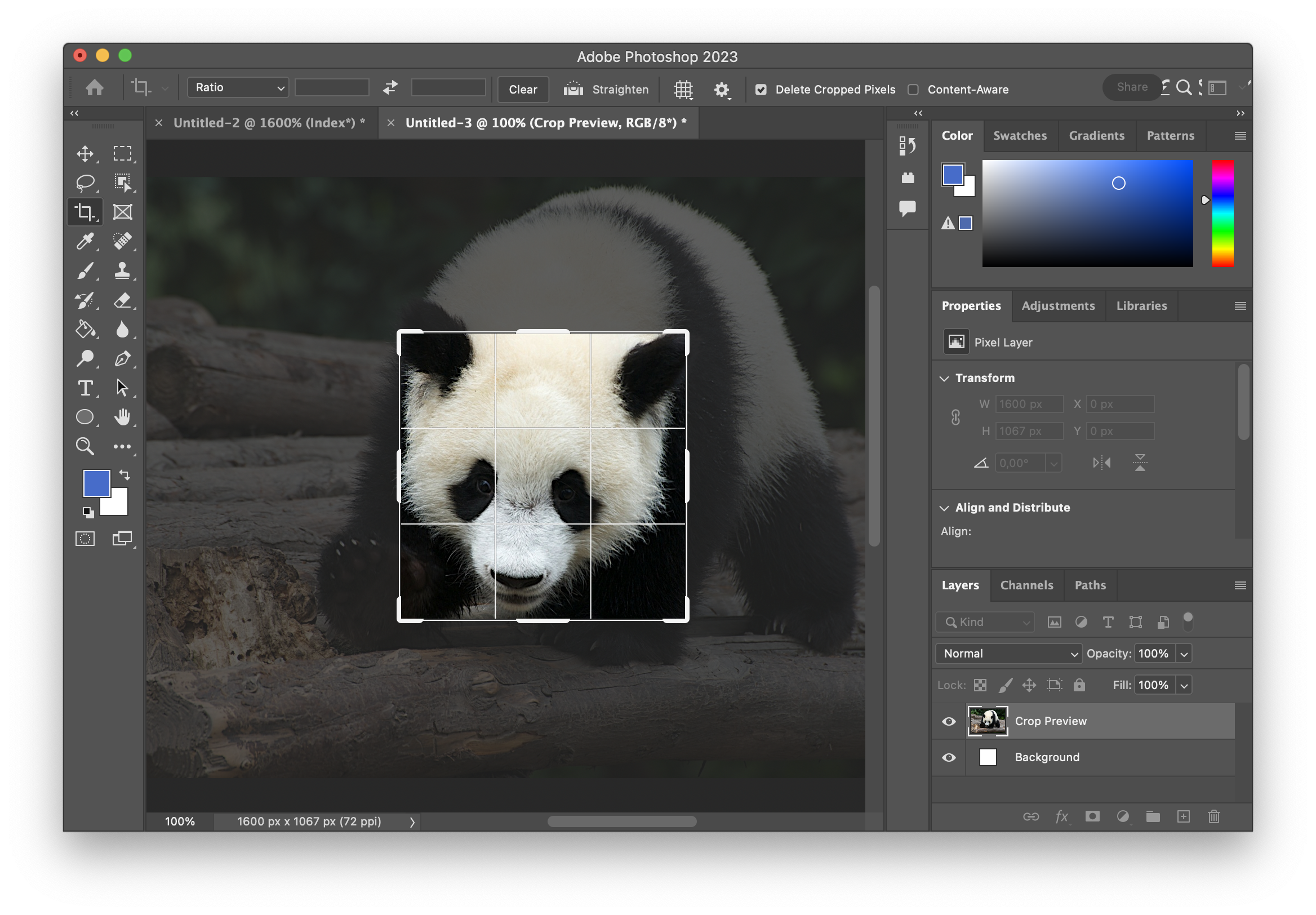
-
Resize using
Image>Image Size…Objective: Reduce to the number of pixels matching the final number of LEGO tiles.
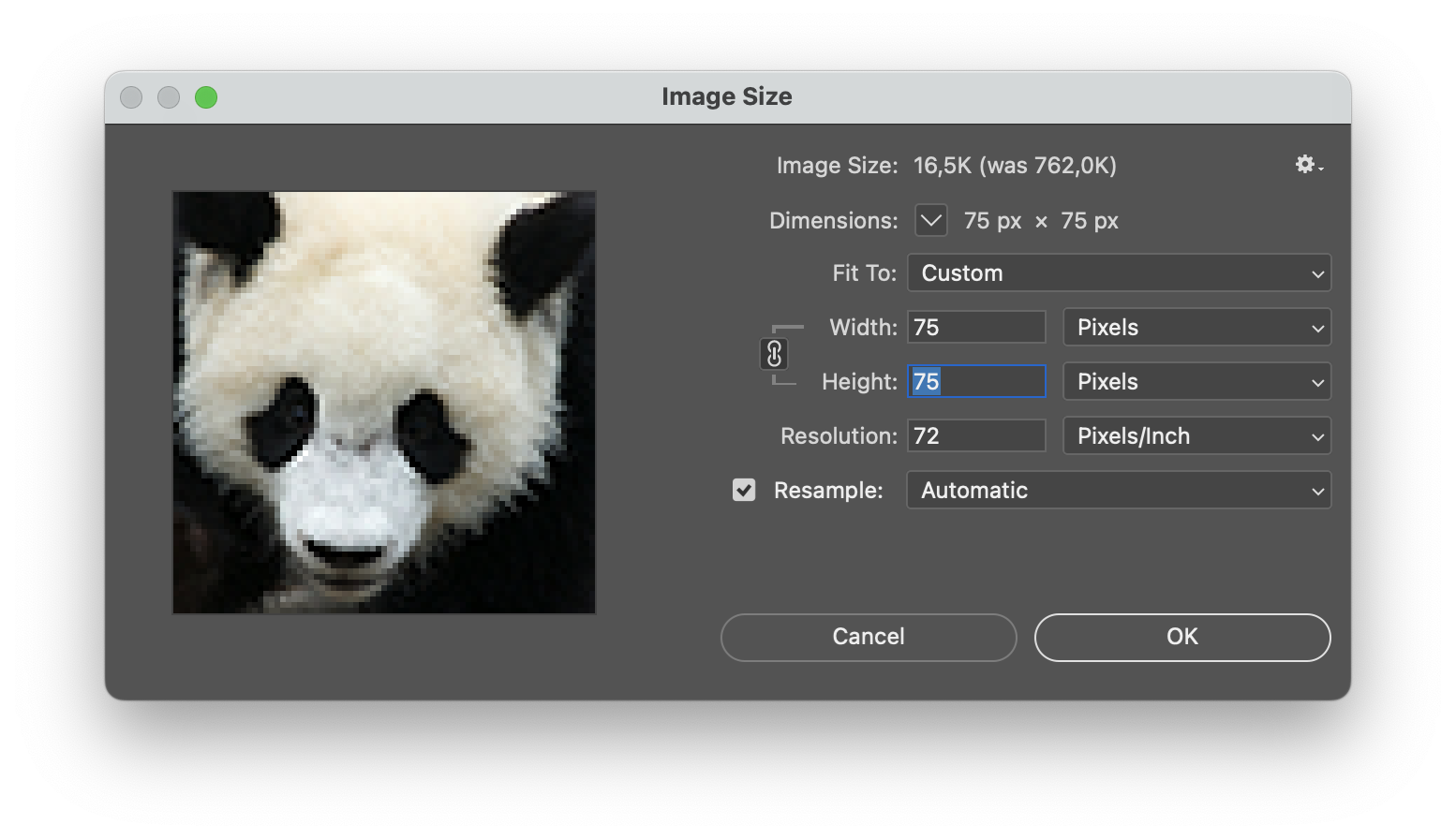
-
Reduce the number of colors using
Image>Mode>Inverted Colors…(click "OK" if asked to flatten layers and tryPatternfor the dither mode)Objective: Match the number of habits you plan to track.
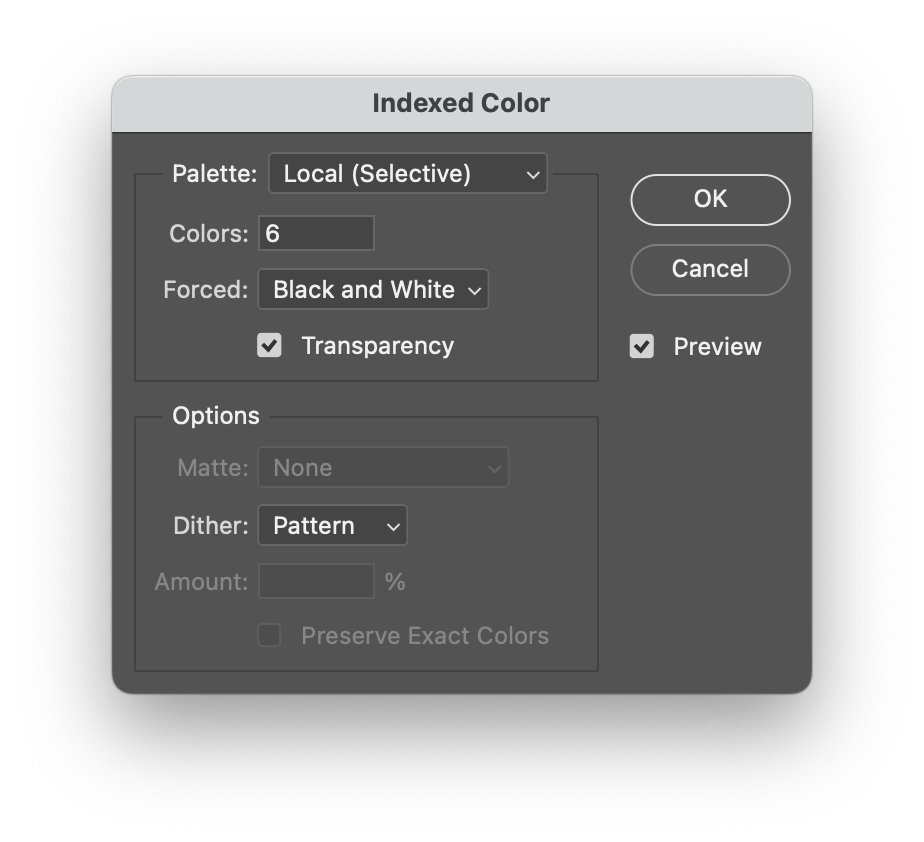
You can use a few additional colors for a better rendering if you group several colors under the same habit. You can also plan for additional colors if you want to have a buffer.
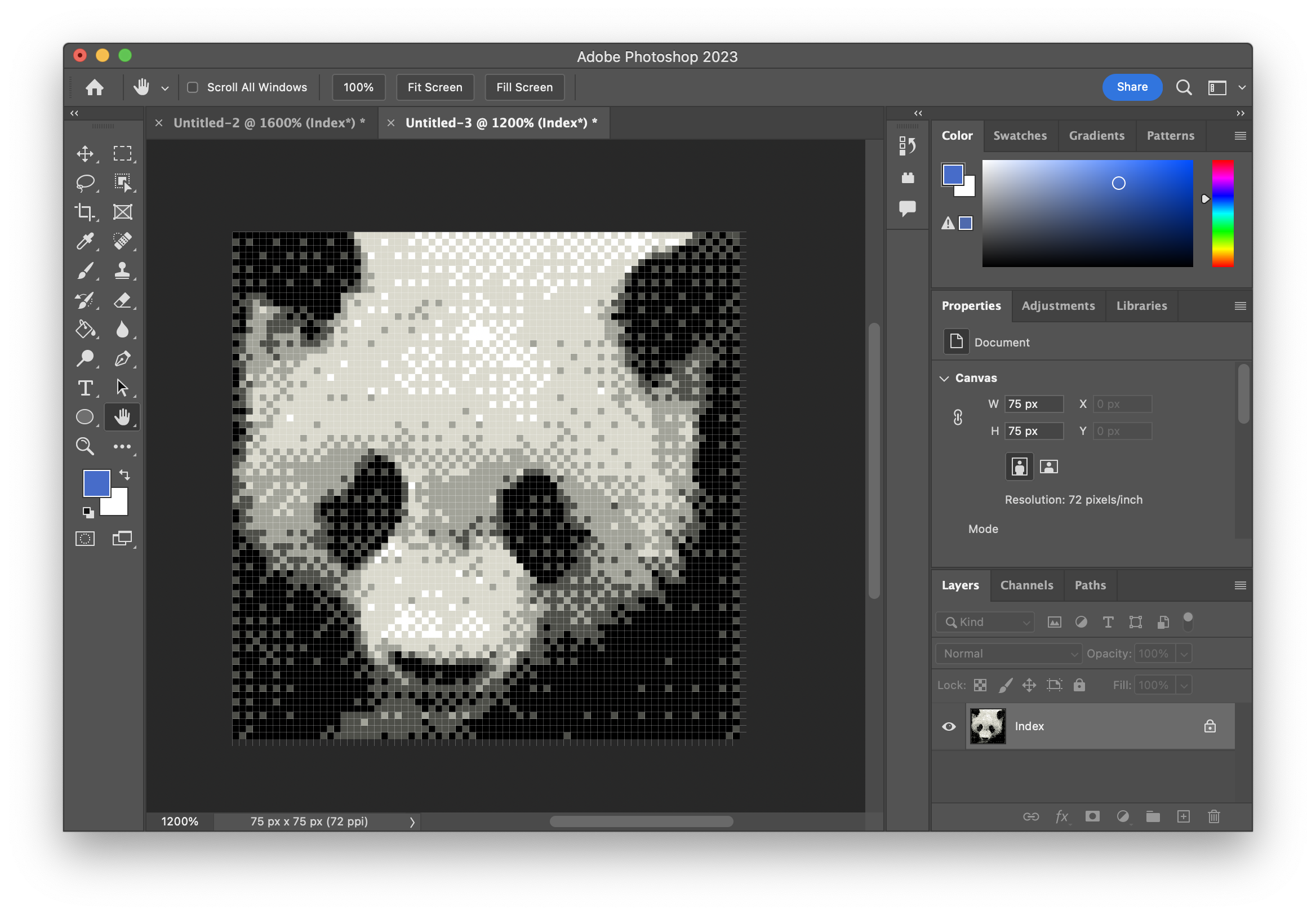
-
Recolor using
Image>Mode>Color Table…Objective: Use similar colors as the ones available on the LEGO store.
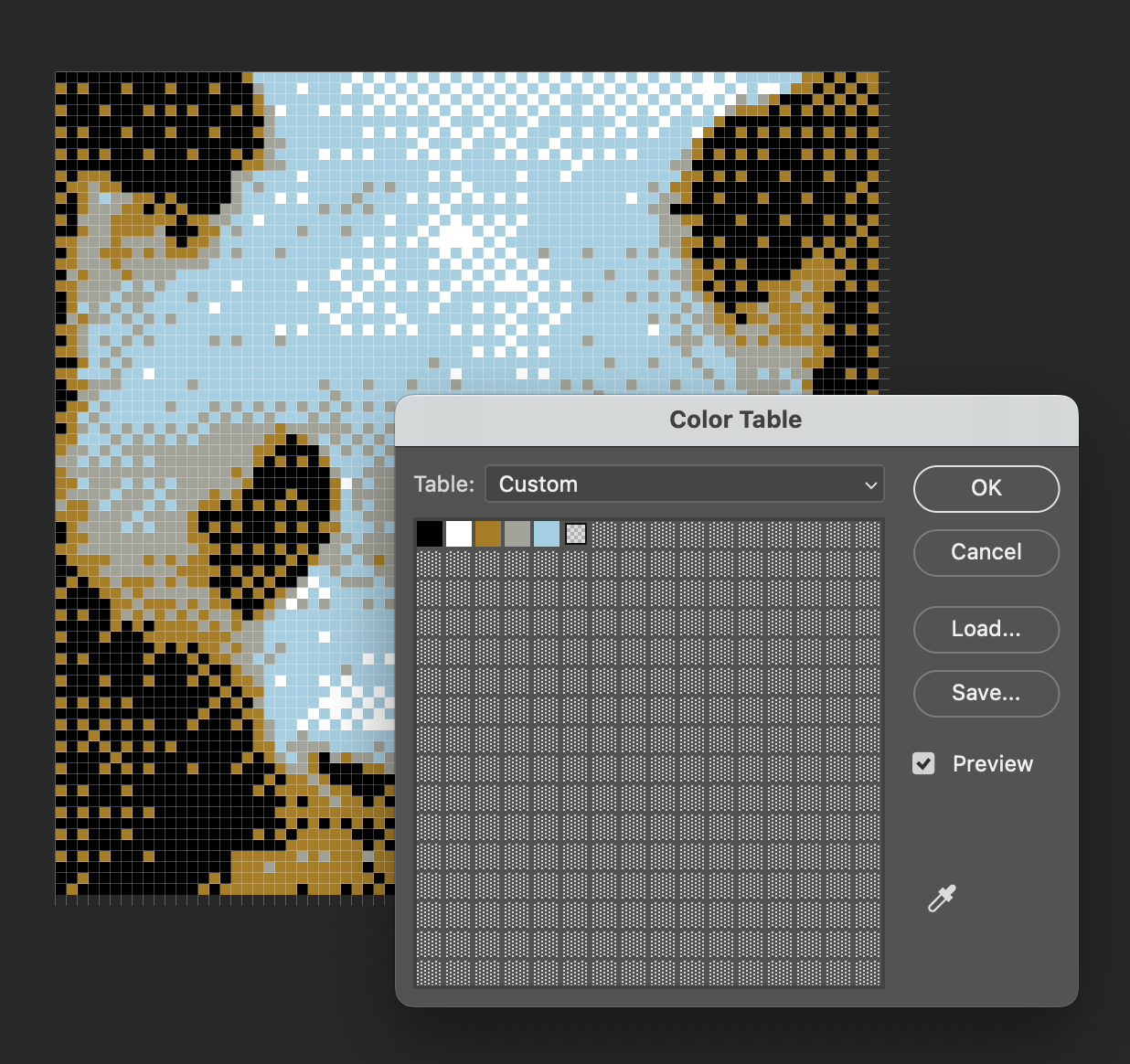
-
Count the colors
Objective: Determine to number of tiles to order.

You may use this Python script if you don’t want to count every single pixel 😅: (export the picture in a lossless format like PNG first)
""" Requirements: $ python3 -m pip install --upgrade pip $ python3 -m pip install --upgrade Pillow $ python3 -m pip install --upgrade rich Usage: $ python3 pixels.py image.png """ import sys from PIL import Image from rich.console import Console console = Console() # creating a image object im = Image.open(sys.argv[1]) im.load() colors = {} for x in range(im.width): for y in range(im.height): color = im.getpixel((x, y)) if color not in colors: colors[color] = 0 colors[color] += 1 for color, count in colors.items(): console.print(f"Color {count}", style=f"rgb({color[0]},{color[1]},{color[2]}) bold")When executed on our processed image:
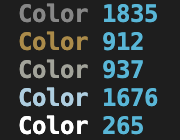
The last step is to order the tiles on a marketplace like BrickLink (💰 75 x 75 = ~$60). Don’t forget to also add the pieces for the frame. (Check the required bricks on the spare parts page or in the notice of the Lego World Map for inspiration.)
Bonus: My Lego Box
The Lego World Map package contains bags of thousands of tiles. Not very convenient to use over such a long time. My idea was to create a custom box to contain a subset of all these tiles to keep at hand and thus quickly pick a tile to add to the map.
I used the official set Jewelry Box as inspiration (see the instructions) and decided to create a box with 9 sorting compartments. I used the application My Studio by BrickLink (other applications exist) to simply place an order on BrickLink with just a click. Here is the result:
I organize my box like this:
-
6 compartements for my 6 habits
-
1 compartement for my milestones
-
1 compartement for my buffer (optional to get started)
-
1 empty compartment
The remaining tiles are preserved in plastic bags, securely stored using zippers. The box will be refilled regularly (~every year).
Note that the empty compartment is important to implement the two-step principle. I place all new tiles in this compartment. (I created a small vertical drawer since this compartment doesn’t have to be as big as others and picking tiles on the bottom was rather annoying… 😡). This compartment is emptied at the end of every week.

